Conrad Marca-Relli - Il Maestro Irascibile

Conrad Marca-Relli. Il Maestro irascibile, installation view Mattia De Luca (Roma) I Ph. Daniele Molajoli
Dal 9 October 2021 al 9 October 2021
Roma
Luogo: Palazzo Albertoni Spinola
Indirizzo: Piazza di Campitelli 2
Enti promotori:
- In collaborazione con Archivio Marca-Relli
Telefono per informazioni: +39 06 6991188
E-Mail info: info@mattiadeluca.com
Sito ufficiale: http://www.mattiadeluca.com
La Galleria Mattia De Luca è orgogliosa di presentare Conrad Marca-Relli - Il Maestro Irascibile, una mostra interamente dedicata all’artista italoamericano, figura cardine dell’Espressionismo Astratto americano. Dopo la storica esposizione della Galleria La Tartaruga del 1957, la prima retrospettiva romana organizzata in collaborazione con l’Archivio Marca-Relli, verrà inaugurata sabato 9 ottobre 2021 negli spazi di Palazzo Albertoni Spinola in Piazza di Campitelli 2 a Roma.
Conrad Marca-Relli, al secolo Corrado Marcarelli, nasce a Boston il 5 giugno 1913 da genitori italiani di origini campane. Spirito indomito e instancabile viaggiatore, Marca-Relli cresce in un continuum di viaggi in Italia che lo renderà perfettamente bilingue, letteralmente e artisticamente parlando. Amante della monumentalità di Roma, dove lavorerà per diversi anni, e della grande Pittura rinascimentale italiana, l’italoamericano è la vera anima classicista della Scuola di New York. Al suo temperamento fervente è da ricondurre la nascita dell’Eighth Street Club e l’organizzazione della celebre mostra Ninth Street Show del 1951. Marca-Relli, intriso di cultura classica ma anche di un certo pragmatismo di matrice americana, intraprenderà dagli anni Cinquanta un fortunato e imperituro percorso di ricerca sulla tecnica a collage, di cui porterà all’estrema conseguenza gli esiti compositivi fino al punto di parlare, per la sua arte, di “pittura-collage”. Questo modus operandi si configura come un bilanciato mix fra l’armonia compositiva tipica della tradizione europea e l’irruenza del gesto figlia dell’arena rosenberghiana e dell’action painting: tele grezze tagliate a rasoio, incollate, scollate, spostate, sovrapposte, stratificate sul supporto e, infine, ridipinte nell’ottica di armonizzare gli spazi “positivi” e quelli “negativi”. Da questo primigenio incontro fra forze opposte prendono vita le sue tele, palinsesti di collage figli di una gestualità parimenti ragionata e “nevrastenica”, termine con cui Afro Basaldella definisce l’artista in una lettera inviata all’amico e collega Toti Scialoja.
Partendo sempre dalle proporzioni classiche del manichino ligneo – inseparabile compagno della sua pittura – Marca-Relli dà vita a un macrocosmo di segni solo apparentemente astratti, tasselli primari dei suoi maggiori risultati artistici, in mostra alla Galleria Mattia De Luca. Dagli asciutti Cityscape dal sapore metafisico dei primi anni Cinquanta, alle enigmatiche figure sedute degli esordi a collage, per arrivare fino all’omaggio dedicato al suo amico e vicino di casa Jackson Pollock, la mostra ripercorre il forte impatto della figura e dell’opera di Marca-Relli sulla scena americana e internazionale.
Sarà possibile apprezzare opere del calibro di Cityscape del 1953, olio su tela ispirato ai soggiorni messicani dell’artista e punto di svolta per l’approdo alla tecnica del collage; ci saranno anche le Seated Figure di metà anni Cinquanta, capisaldi del suo corpus grazie alla loro armonia compositiva di reminiscenza cubista. Immancabili i capolavori del 1955 The Strategist e The Struggle, insieme all’opera-elogio Death of Jackson Pollock, testamento di quella che più che un’amicizia è una reciproca influenza, ricca di scontri – d’altronde come conciliare l’irascibile Conrad con il dispotico e infantile animo del ragazzo di Cody –, di dialoghi, di incontri e rispetto reciproco. Il viaggio nella produzione del maestro italoamericano proseguirà con l’armonico subbuglio di forme di M-11-56, opera che aprirà la strada ai capolavori newyorkesi The Battle e The Warrior, rispettivamente parte delle collezioni permanenti MET e del Guggenheim Museum di New York. Logica conseguenza del percorso artistico di Marca-Relli, saranno esposte le tele di fine anni Cinquanta e dei primi anni Sessanta, nelle quali svanisce ogni riferimento antropomorfo per fare spazio a composizioni architettoniche di sapore classico, come in The Wall No. 2. Non mancano i media alternativi con i quali l’artista si cimenta lungo l’intero arco della sua vita, come nel caso di Cunard L-8-62, che ci mostrano la grande capacità di Marca-Relli di assorbire gli stimoli derivanti dalle esperienze del minimal e dell’Arte povera, attraverso composizioni che, pur non perdendo mai di vista l’armonia delle forme, si aprono ai concetti di ritmo e di materia tipici dei lavori di Donald Judd e di quelli dei grandi poveristi. Marca-Relli, espressionista astratto dall’impostazione europea, è non solo un “ponte” fra Roma e New York, ma soprattutto un maestro a cavallo di due mondi, l’Europa e gli Stati Uniti.
Conrad Marca-Relli
I suoi lavori sono inclusi tra le altre, nelle seguenti collezioni: Bilbao, Guggenheim; Buffalo, Albright-Knox Art Gallery; Chicago, The Art Institute; New York, MET, MoMA, Whitney Museum of American Art; San Francisco, Museum of Modern Art; Venezia, Fondazione Peggy Guggenheim; Washington, National Gallery of Art, Smithsonian American Art Museum.
Conrad Marca-Relli, al secolo Corrado Marcarelli, nasce a Boston il 5 giugno 1913 da genitori italiani di origini campane. Spirito indomito e instancabile viaggiatore, Marca-Relli cresce in un continuum di viaggi in Italia che lo renderà perfettamente bilingue, letteralmente e artisticamente parlando. Amante della monumentalità di Roma, dove lavorerà per diversi anni, e della grande Pittura rinascimentale italiana, l’italoamericano è la vera anima classicista della Scuola di New York. Al suo temperamento fervente è da ricondurre la nascita dell’Eighth Street Club e l’organizzazione della celebre mostra Ninth Street Show del 1951. Marca-Relli, intriso di cultura classica ma anche di un certo pragmatismo di matrice americana, intraprenderà dagli anni Cinquanta un fortunato e imperituro percorso di ricerca sulla tecnica a collage, di cui porterà all’estrema conseguenza gli esiti compositivi fino al punto di parlare, per la sua arte, di “pittura-collage”. Questo modus operandi si configura come un bilanciato mix fra l’armonia compositiva tipica della tradizione europea e l’irruenza del gesto figlia dell’arena rosenberghiana e dell’action painting: tele grezze tagliate a rasoio, incollate, scollate, spostate, sovrapposte, stratificate sul supporto e, infine, ridipinte nell’ottica di armonizzare gli spazi “positivi” e quelli “negativi”. Da questo primigenio incontro fra forze opposte prendono vita le sue tele, palinsesti di collage figli di una gestualità parimenti ragionata e “nevrastenica”, termine con cui Afro Basaldella definisce l’artista in una lettera inviata all’amico e collega Toti Scialoja.
Partendo sempre dalle proporzioni classiche del manichino ligneo – inseparabile compagno della sua pittura – Marca-Relli dà vita a un macrocosmo di segni solo apparentemente astratti, tasselli primari dei suoi maggiori risultati artistici, in mostra alla Galleria Mattia De Luca. Dagli asciutti Cityscape dal sapore metafisico dei primi anni Cinquanta, alle enigmatiche figure sedute degli esordi a collage, per arrivare fino all’omaggio dedicato al suo amico e vicino di casa Jackson Pollock, la mostra ripercorre il forte impatto della figura e dell’opera di Marca-Relli sulla scena americana e internazionale.
Sarà possibile apprezzare opere del calibro di Cityscape del 1953, olio su tela ispirato ai soggiorni messicani dell’artista e punto di svolta per l’approdo alla tecnica del collage; ci saranno anche le Seated Figure di metà anni Cinquanta, capisaldi del suo corpus grazie alla loro armonia compositiva di reminiscenza cubista. Immancabili i capolavori del 1955 The Strategist e The Struggle, insieme all’opera-elogio Death of Jackson Pollock, testamento di quella che più che un’amicizia è una reciproca influenza, ricca di scontri – d’altronde come conciliare l’irascibile Conrad con il dispotico e infantile animo del ragazzo di Cody –, di dialoghi, di incontri e rispetto reciproco. Il viaggio nella produzione del maestro italoamericano proseguirà con l’armonico subbuglio di forme di M-11-56, opera che aprirà la strada ai capolavori newyorkesi The Battle e The Warrior, rispettivamente parte delle collezioni permanenti MET e del Guggenheim Museum di New York. Logica conseguenza del percorso artistico di Marca-Relli, saranno esposte le tele di fine anni Cinquanta e dei primi anni Sessanta, nelle quali svanisce ogni riferimento antropomorfo per fare spazio a composizioni architettoniche di sapore classico, come in The Wall No. 2. Non mancano i media alternativi con i quali l’artista si cimenta lungo l’intero arco della sua vita, come nel caso di Cunard L-8-62, che ci mostrano la grande capacità di Marca-Relli di assorbire gli stimoli derivanti dalle esperienze del minimal e dell’Arte povera, attraverso composizioni che, pur non perdendo mai di vista l’armonia delle forme, si aprono ai concetti di ritmo e di materia tipici dei lavori di Donald Judd e di quelli dei grandi poveristi. Marca-Relli, espressionista astratto dall’impostazione europea, è non solo un “ponte” fra Roma e New York, ma soprattutto un maestro a cavallo di due mondi, l’Europa e gli Stati Uniti.
Conrad Marca-Relli
I suoi lavori sono inclusi tra le altre, nelle seguenti collezioni: Bilbao, Guggenheim; Buffalo, Albright-Knox Art Gallery; Chicago, The Art Institute; New York, MET, MoMA, Whitney Museum of American Art; San Francisco, Museum of Modern Art; Venezia, Fondazione Peggy Guggenheim; Washington, National Gallery of Art, Smithsonian American Art Museum.
SCARICA IL COMUNICATO IN PDF
COMMENTI

-
 Dal 8 November 2025 al 11 January 2026
Venezia | Museo Correr
Dal 8 November 2025 al 11 January 2026
Venezia | Museo Correr
CARATTERI. Calligrafia e tipografia: Corea del Sud e Stati Uniti
-
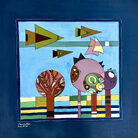 Dal 8 November 2025 al 22 February 2026
Brescia | Museo di Santa Giulia
Dal 8 November 2025 al 22 February 2026
Brescia | Museo di Santa Giulia
Material for an Exhibition. Storie, memorie e lotte dalla Palestina e dal Mediterraneo
-
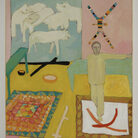 Dal 8 November 2025 al 18 January 2026
Perugia | Perugia, Spoleto e Gubbio
Dal 8 November 2025 al 18 January 2026
Perugia | Perugia, Spoleto e Gubbio
Mimmo Paladino. Antologica
-
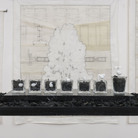 Dal 7 November 2025 al 25 January 2026
Roma | Museo Carlo Bilotti Aranciera di Villa Borghese
Dal 7 November 2025 al 25 January 2026
Roma | Museo Carlo Bilotti Aranciera di Villa Borghese
Silvia Scaringella. Deus sive natura
-
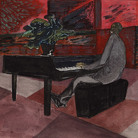 Dal 5 November 2025 al 1 March 2026
Asti | Palazzo Mazzetti
Dal 5 November 2025 al 1 March 2026
Asti | Palazzo Mazzetti
PAOLO CONTE. Original
-
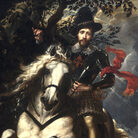 Dal 28 October 2025 al 15 February 2026
Brescia | Pinacoteca Tosio Martinengo
Dal 28 October 2025 al 15 February 2026
Brescia | Pinacoteca Tosio Martinengo
Peter Paul Rubens. Giovan Carlo Doria a cavallo


